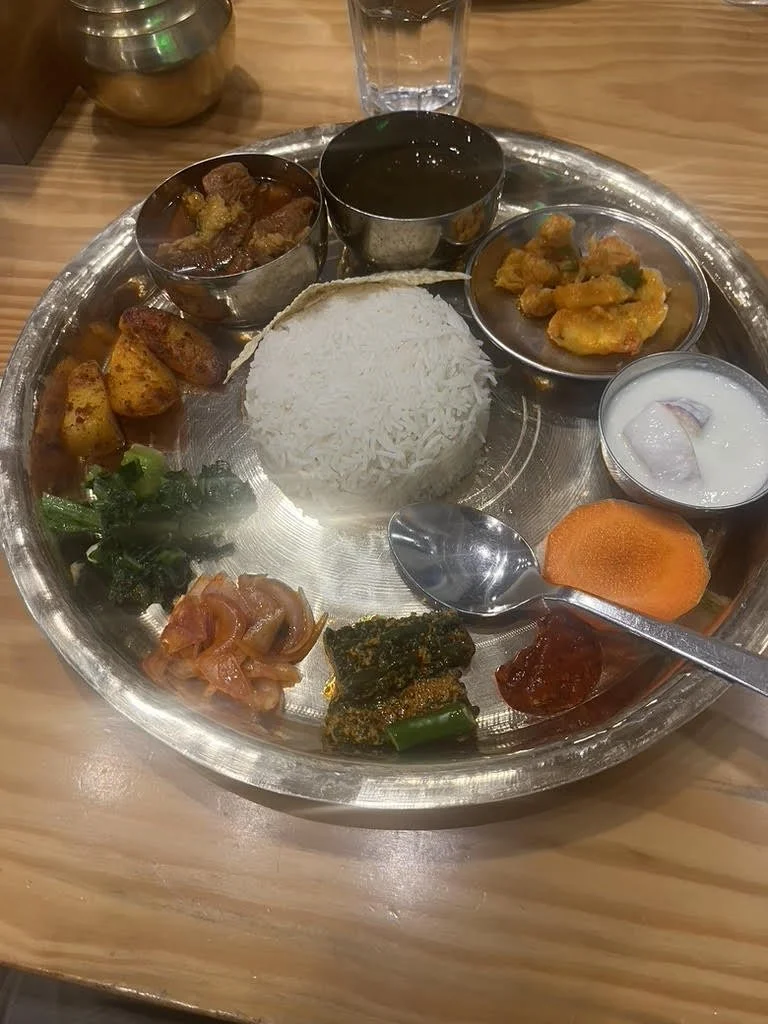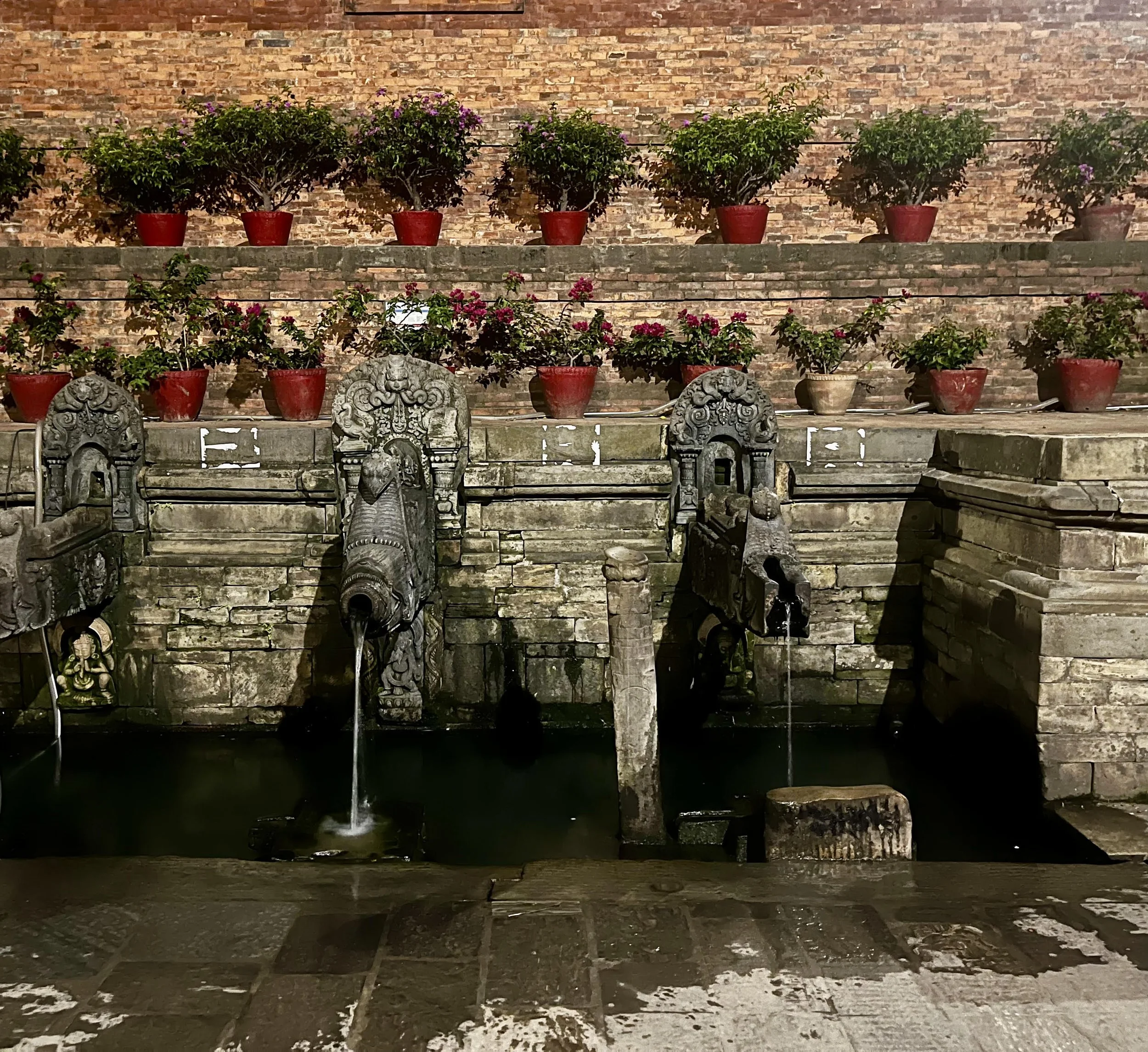Good Samaritan physician revisits his ABCs
Earlier this year, Dipen Kadaria, MD, Pulmonary Disease, traveled back in time. Halfway around the globe. Deep into the Himalayas.
“I reconnected to where I was born, to my purpose in serving as a physician, to my intention to always be the best person, dad, doctor, husband and friend I can be,” he said. “I emerged from the journey as I thought I would, very happy for the life I’ve chosen and grateful for the opportunity to reflect.”
The Annapurna Base Camp Trek, known as the ABC, invites adventure hikers and soul seekers alike, willing to take the deep dive into the challenging, quiet, uncomfortable and glorious. Kadaria and his group opted for the half-excursion, a six-day hike that’s more than 20 miles through valleys and local villages, up the rugged terrain of remote mountains, along the edges of glaciers and into thin air.
Kadaria looking at Annapurna South (23,684 feet) at left and Annapurna 1 (26,545 feet) at right, absorbing how “enchanting and mystic” they look. Annapurna 1 is the 10th tallest peak in the world and, for hikers, the deadliest. As of April 2024, 365 people have summitted Annapurna 1, while 72 have died in the attempt.
It’s nearly the top of the world, closer than most people will ever get. And it’s the scenery, the silence, the exhaustion that get you thinking.
“In the very first few hours, your ego is gone, and then very quickly all of the tangles drop, those very small issues we get wrapped up and tangled in that lose their importance within weeks,” he said. “Our relationships, our community, our service: These are all that matter.”
A Nepalese village in the foreground with Annapurna South looming in the background
Snowcapped Fish Tail Mountain (22,943 feet) reveals itself through the clouds.
View from the valley on the way to Annapurna Base Camp
Lodges at Annapurna Base Camp in the foreground, as well as Gangapurna mountain (24,459 feet) at left and Fish Tail at right
Kadaria went for quiet reflection but he was not alone; he went with friends from medical school. Thirty years ago, they were young physicians training at Nepalgunj Medical College in Kohalpur, and later, they worked at Bir Hospital in Kathmandu. With 535 beds, Bir is Nepal’s largest government hospital and one of the busiest in the nation.
He never intended to leave his home country, but felt a strong inner push for advanced training that was not available in Nepal. Some traveling physicians from the US suggested he move west, and he completed his residency and fellowship at the University of Tennessee Memphis.
After six years of training and eight years of practicing, as well as leading – he served as UT’s program director for Critical Care Medicine and director of research – friends, family and the mountains that reminded him of home pulled him to Colorado in 2022.
“Technology enables equity in care. Best practices are the same around the world because we can so easily and quickly share our knowledge,” he said. “The real difference between here and Nepal is in access to care. Without health insurance, Nepalese can only seek care they can afford, and there isn’t enough manpower to provide all the charity care residents need.”
Kadaria remains active in Nepalese healthcare. He has an honorary appointment at Chitwan Medical College in Bharatpur and when he is in Nepal lectures at several different institutions. He also speaks with Critical Care physicians from Nepal regularly, offering guidance and collaboration, and helps run a foundation that trains nurses and other healthcare practitioners in Nepal: Danfe Foundation.
This most recent trip to Nepal was 18 days. He spent six on the ABC Trek and the rest in the city.
Patan Durbar Sqare in Kathmandu, Nepal’s capital and largest city. The temple at left is Krishna Mandir, which is three floors tall and made almost entirely of stone.
Traditional Nepalese dinner set. This is a meat set, with the chicken dish at 11 o’clock. Following clockwise are black lentil soup, cauliflower, curd, carrot and pickles, with spinach at 8 o’clock and potatoes to round out the dish.
Nepalese public water source, in use for centuries
So there’s all that, and then, of course, there’s this.
Kadaria was “very disturbed” to witness the noticeable recession of the Himalayan glacier in just the seven years since he’s been gone. The Himalayas are a vital source of drinking water for more than a quarter of the world's population.
A growing family and rewarding medical career has kept Kadaria busy. Add to that a global COVID shutdown, and until this year it had been seven years since he’d returned to his homeland. The gratitude was worth the wait.
“I’m so lucky to be able to make his journey, both back to my home and also within me, to take the time to reflect and know for certain I’m on the right path and can recommit to showing up for everyone in my life as my best self.”
Physicians who would like to learn more about Nepal or the ABC Trek can contact Kadaria at Dipen.X.Kadaria@kp.org.









